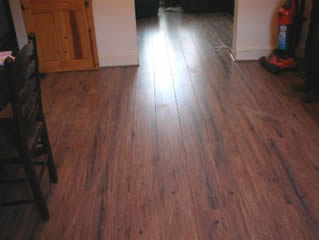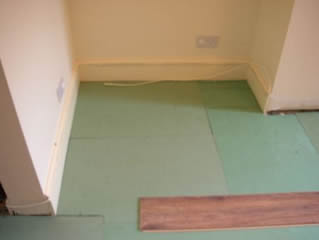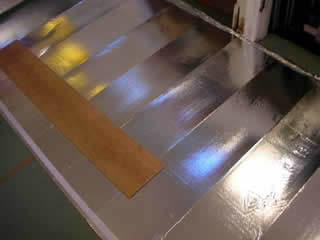
Before you can fit your laminate floor, careful consideration needs to be given to the type of underlay that you are going to be using.
This depends on what the floor is made from and how level it is.
Choose your underlay very carefully.
Laminate underlay is available for all types of floors and some incorporate a moisture barrier, this would be needed if the laminate was to be laid directly onto a concrete floor.
Acoustic Underlay is also available, which is made from high density resilient rubber sponge, this would be useful in upstairs rooms, especially if you live in a flat as it will prevent some of the noise from annoying the neighbours below.

This is fibre underlay that is 5mm thick, this can be used on slightly un-level floors and is very good at reducing noise.
Cut the fibre with a sharp knife and butt the edges together, then fit the laminate on top.
Many laminate floors can accommodate floors that are slightly out of level, typically 1mm per meter. If your floor is very uneven or un level it may need further treatment. Wood floors would require hardboard to be put down first and concrete floors would require a latex screed.
So basically if you are laying laminate over a wooden floor that is level and you are not concerned about sound insulation then foam underlay would be used, this is normally very cheap and comes in large rolls. If the floor was slightly uneven then you would use fibre underlay.
If the floor is concrete then fibre underlay would be best, perhaps one incorporating a moisture barrier.
If you are concerned about noise levels then acoustic underlay should be used.

Here two lots of underlay have been used.
The fibre on has been laid first and then the foil one has been laid on top.
Laying laminate flooring on top of carpet underlay
You are probably wondering if you can install laminate flooring over existing carpet or carpet underlay. The answer is no because the carpet underlay is designed to be soft and bouncy whereas the laminate floor underlay is reasonably rigid. The laminate floor underlay has to be rigid to prevent the laminate boards from bouncing which will eventually damage their joints. So to be clear when installing laminate flooring it is best to use a dedicated laminate flooring underlay, this can vary in price quite a lot depending on the quality of the underlay.




